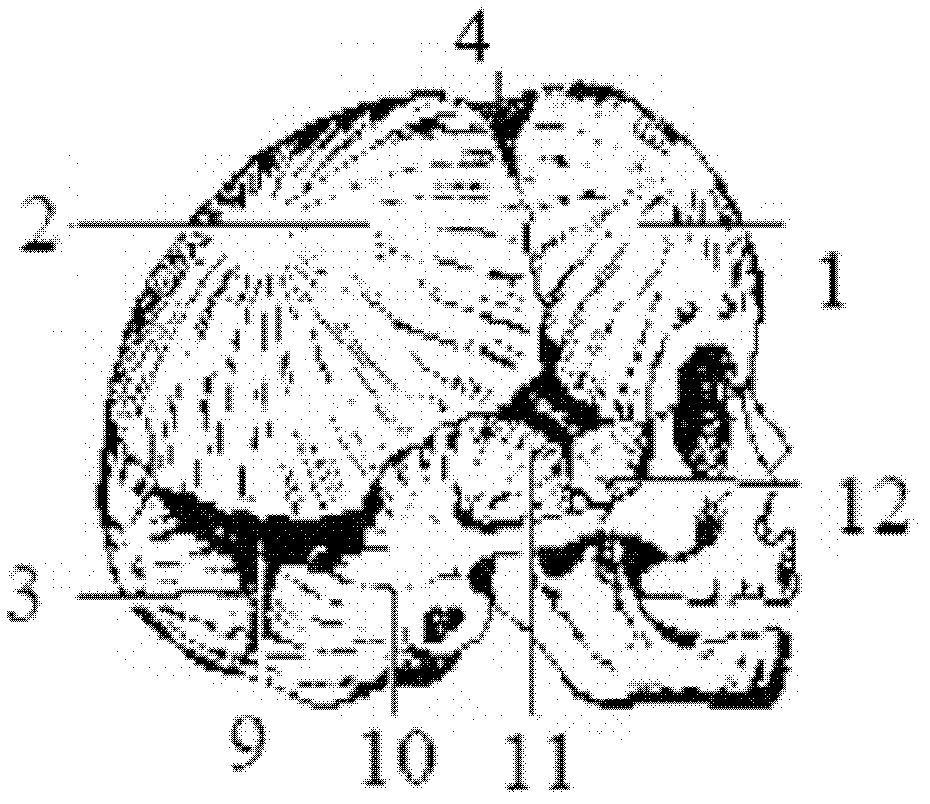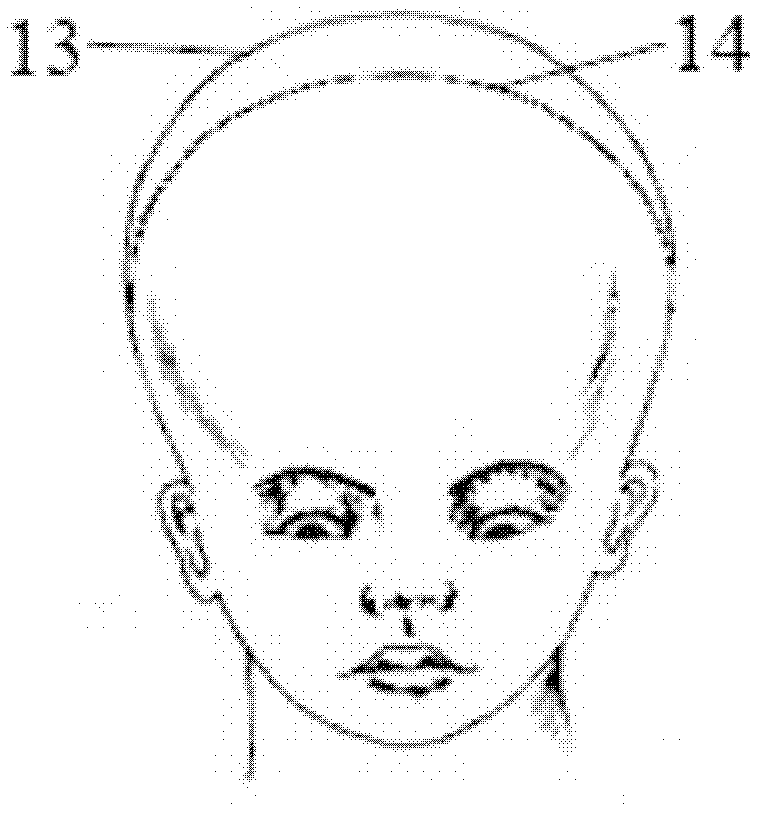Skull guiding formwork for calvarium reconstruction surgery and manufacturing method of skull guiding formwork
A technique of surgical operation and template, applied in the direction of surgery, medical science, etc., can solve the problems of bone flap injury, unfavorable healing, etc., and achieve the effect of reducing injury, facilitating recovery, and reducing complexity
- Summary
- Abstract
- Description
- Claims
- Application Information
AI Technical Summary
Problems solved by technology
Method used
Image
Examples
Embodiment 1
[0053] A method for making a skull-guided template for cranial reconstruction surgery, comprising the following steps:
[0054] 1) Scan the patient's head with a 3D CT scanning device or MRI device to obtain image data containing the patient's head information, screen the skull data from the image data of the head information, and establish a 3D contour model of the patient's skull;
[0055] 2) Compare the 3D outline model of the patient's skull with the normal skull model, make the 3D outline model of the patient's skull meet the appearance requirements of the normal skull through geometric transformation, and use the 3D model after geometric transformation as the surgical target model;
[0056] 3) Determine the cutting route of the craniotomy, the number of bone flaps to be cut and the shape of the bone flap. The cutting route avoids parts that do not need to be separated and important anatomical structures to reduce surgical risks. The three-dimensional contour model of the...
Embodiment 2
[0075] The present invention is specifically described in conjunction with macrocephaly case:
[0076] exist Figure 1A and Figure 1B In , the anatomical structure of the normal skull is shown, the frontal bone 1, the parietal bone 2 and the occipital bone 3 constitute the cranial roof. Figure 1C It shows the difference between the cranial top of the patient with macrocephaly and the normal person, the boundary 13 is the contour of the cranial top of the patient with macrocephaly, and the boundary 14 is the contour of the cranial top of the normal person. The purpose of cranial reconstruction surgery is to reduce the cranial top profile of 13 to the normal cranial top profile of 14.
[0077] figure 2 The flow of the digital design method of cranial top reconstruction surgery and the design method of cutting guide template described in the present invention is described in detail.
[0078] According to the present invention, the patient needs to take CT or MRI, obtain suc...
Embodiment 3
[0086] In conjunction with plagiocephaly patient case, further illustrate the present invention:
[0087] Figure 14 describes the purpose of plastic surgery by adjusting the bone flap of the plagiocephaly patient. The cranial top 16 shown in 14A is in poor shape, and the frontal bone 1 is not full. The CT data of the patient are reconstructed. Figure 14B What is shown is the shape obtained after the simulation operation, and the purpose of plastic surgery can be achieved by adjusting the bone flap position of the cranium itself, and the bone flap 26 and the original bone flap at the position of the bone flap 27 are exchanged and adjusted to Figure 14B The location is shown, and the coronal suture 5 is reconstructed. The guide template is generated by extracting the outer surfaces of the bone flap 26 and the bone flap 27, and the guide template is processed by laser sintering technology, Figure 14C What is shown is that the doctor cuts out the bone flap 26 by covering the ...
PUM
 Login to View More
Login to View More Abstract
Description
Claims
Application Information
 Login to View More
Login to View More - R&D
- Intellectual Property
- Life Sciences
- Materials
- Tech Scout
- Unparalleled Data Quality
- Higher Quality Content
- 60% Fewer Hallucinations
Browse by: Latest US Patents, China's latest patents, Technical Efficacy Thesaurus, Application Domain, Technology Topic, Popular Technical Reports.
© 2025 PatSnap. All rights reserved.Legal|Privacy policy|Modern Slavery Act Transparency Statement|Sitemap|About US| Contact US: help@patsnap.com



